|
This Year at the Queen Elisabeth International Music Competition: Voice Competition (No.53)
21 May 2014
Last week, from the 14th till yesterday, the first round as well as the semi-final of the Queen Elisabeth Music Competition took place. The twelve finalists will perform from the 28th till the 31st of this month. This year is the year of the voice competition. 73 upcoming singers from 27 countries around the world will try their best in the first round of this difficult competition, also called “the gateway to success in the classical music world”. Among the selected candidates only 16 were male, compared to 57 female singers. Unfortunately though, there was neither a Japanese male nor female candidate selected for the competition. South Korea was the cream of the crop with the most candidates in the first round, no less than twelve, four more than France in the second place (eight candidates). China sent four candidates. The candidates had to be selected based on video (DVD) screening from amongst 214 candidates wishing to compete in this competition. Already at this stage were there three times as many candidates. The final 12 who make it through the three barriers from the preliminary rounds and advance through the semi-final become the finalists. According to yesterday’s announcement, amongst the finalists four are Korean and one is Chinese. Most surprisingly was probably the announcement that five of the six Belgian candidates made it to the semi-finals (two of whom went through to the finals). Also, not once has there ever been a Japanese singer in the past that finished high in the Queen Elisabeth Voice Competition and compared to the violin and piano competitions, singing is still relatively a weak field. There is definitely not a lack of professional singers active internationally from Japan. Therefore it is rather puzzling that not one got selected for the Queen Elisabeth Competition this time.
< The Marilo Fund and Belgian Media >
The other day an interview for the last three candidates of the Marilo Fund scholarship was held, and just like last year I again acted as one of the judging committee members. A Belgian benefactor donates nearly 10,000 dollars to the Baudouin Foundation each year and these resources are used in this fund to have one journalist cover Japan (up to 5,000 euros in travel costs and coverage expenses). The Belgian media, newspapers in particular have a far lower circulation than in Japan, and generally have a lack of funds, so there is not a lot of room to send a special correspondent abroad. Therefore there are no independently researched in-depth articles on the island country of Japan in the Far East and for the general reader Japan remains an ‘unknown country’. The above-mentioned benefactor was concerned about this and uses his personal fortune for this fund for news coverage of Japan by Belgian journalists. This person used to work in advertising, had also a deep business relationship with upcoming Japanese companies in Belgium, and is now one of the board members of the BJA. His daughter did Japanese studies at the KUL and is now currently active in the same field as her father. Both father and daughter were present at the last selection interview as judges for the committee. A young 28 year-old journalist was selected. The young journalist will go to Japan for two weeks in October to collect news material on the current situation of Japan’s venture businesses. I am looking forward to see what kind of articles will be published in the newspaper.
< Autoworld Brussels >
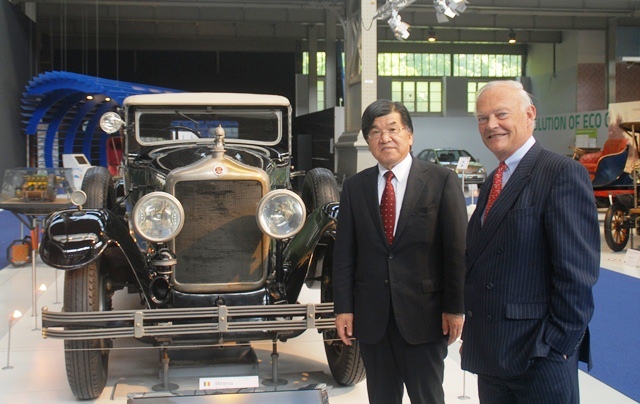 Last week I was invited by the president of FEBIAC (The Belgian Automobile and Cyclist Federation) Mr Van Kan to visit ‘Autoworld’ at the Cinquantenaire in the centre of Brussels. With about 300 classic cars on display, the museum offers a look at the Belgian history of the automobile. Luxury cars by Minerva and Excelsior, two Belgian car manufacturers who operated until the 1920’s, were also on display in all their former glamour. So, for the classic car enthusiasts, I would highly recommend visiting. Last week I was invited by the president of FEBIAC (The Belgian Automobile and Cyclist Federation) Mr Van Kan to visit ‘Autoworld’ at the Cinquantenaire in the centre of Brussels. With about 300 classic cars on display, the museum offers a look at the Belgian history of the automobile. Luxury cars by Minerva and Excelsior, two Belgian car manufacturers who operated until the 1920’s, were also on display in all their former glamour. So, for the classic car enthusiasts, I would highly recommend visiting.
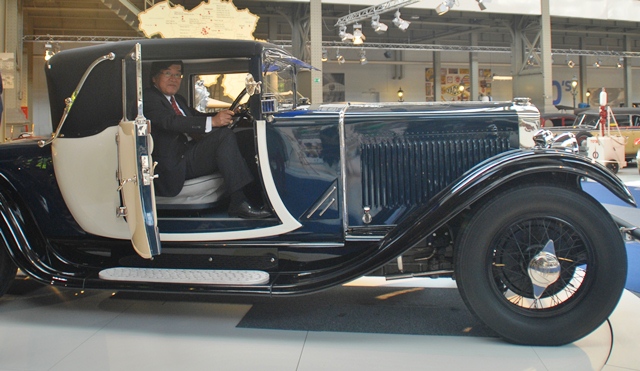 By the way, speaking of automotive production in Belgium, only Audi and Volvo remain today, as the withdrawal of Ford is definite for within the year, following Volkswagen, Renault and Opel. Toyota’s European main office is in Brussels, but the production however is done in the UK and France. Recently, I was given a weighty book by a Belgian friend, titled ‘Le Grand Livre de l’Automobile Belge’. When I read it out of interest, I was surprised to learn that Belgium actually was at the forefront of car production in the world at the end of the 19th century at the dawn of the automobile industry (there were a staggering 250 manufacturers!) and exported high-end passenger cars throughout the world. However, during the First World War, with the country being overrun, many factories were destroyed and Belgium could not compete anymore with the automobile industry in the rest of the world that had entered mass-production. On the brink of the global depression in 1929 car production by the Belgian independent car brands seemed to have come to an end. After the Second World War, the major American and European car manufacturers kept the car production itself in Belgium by setting up their assembly plants in Belgium, but, when in the second half of the 20th century these manufacturers start to relocate their production base to developing countries, one by one they left Belgium leading to today’s situation. By the way, did you know that the first car ever in the world to exceed 100kmph was produced in Belgium? Apparently, the Belgian race car driver Camille Jenatzy set a record of 105kmph in ‘La Jamais Contente’, an electric car, in 1899. Well, I suppose people with such deep knowledge ought to be somewhat eccentric. By the way, speaking of automotive production in Belgium, only Audi and Volvo remain today, as the withdrawal of Ford is definite for within the year, following Volkswagen, Renault and Opel. Toyota’s European main office is in Brussels, but the production however is done in the UK and France. Recently, I was given a weighty book by a Belgian friend, titled ‘Le Grand Livre de l’Automobile Belge’. When I read it out of interest, I was surprised to learn that Belgium actually was at the forefront of car production in the world at the end of the 19th century at the dawn of the automobile industry (there were a staggering 250 manufacturers!) and exported high-end passenger cars throughout the world. However, during the First World War, with the country being overrun, many factories were destroyed and Belgium could not compete anymore with the automobile industry in the rest of the world that had entered mass-production. On the brink of the global depression in 1929 car production by the Belgian independent car brands seemed to have come to an end. After the Second World War, the major American and European car manufacturers kept the car production itself in Belgium by setting up their assembly plants in Belgium, but, when in the second half of the 20th century these manufacturers start to relocate their production base to developing countries, one by one they left Belgium leading to today’s situation. By the way, did you know that the first car ever in the world to exceed 100kmph was produced in Belgium? Apparently, the Belgian race car driver Camille Jenatzy set a record of 105kmph in ‘La Jamais Contente’, an electric car, in 1899. Well, I suppose people with such deep knowledge ought to be somewhat eccentric.
< The Brussels Seafood Fair >
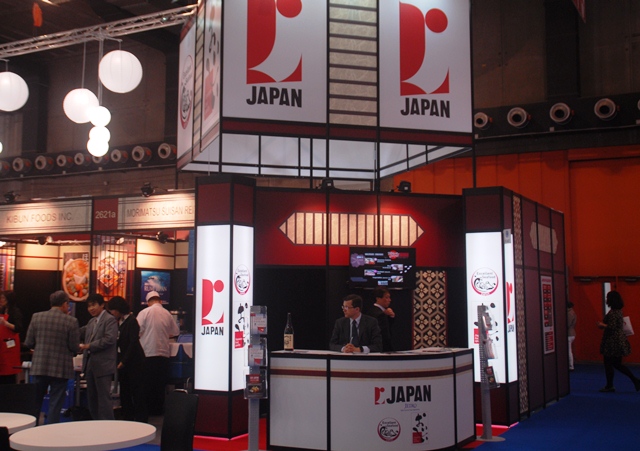 Two weeks ago at an exposition hall in the outskirts of Brussels, the world’s largest seafood exposition, Seafood Expo Global, was held. This year marked the 22nd opening with 1700 participating companies and with the focus on professionals, 25,000 visitors were expected over a three-day span. In addition to the seven Japanese companies with a display at the JETRO booth, eight or nine other companies had their independent booth. I was surprised by the large number of companies from China, with 196 companies dealing with seafood and processing machinery. With 146 exhibitors, Spain had the second largest number of companies present and France came third with 127 companies. To export seafood products from outside of the EU to countries of the European Union, they must be exported from factories that comply with the international hygiene standards called HACCP. Two weeks ago at an exposition hall in the outskirts of Brussels, the world’s largest seafood exposition, Seafood Expo Global, was held. This year marked the 22nd opening with 1700 participating companies and with the focus on professionals, 25,000 visitors were expected over a three-day span. In addition to the seven Japanese companies with a display at the JETRO booth, eight or nine other companies had their independent booth. I was surprised by the large number of companies from China, with 196 companies dealing with seafood and processing machinery. With 146 exhibitors, Spain had the second largest number of companies present and France came third with 127 companies. To export seafood products from outside of the EU to countries of the European Union, they must be exported from factories that comply with the international hygiene standards called HACCP. 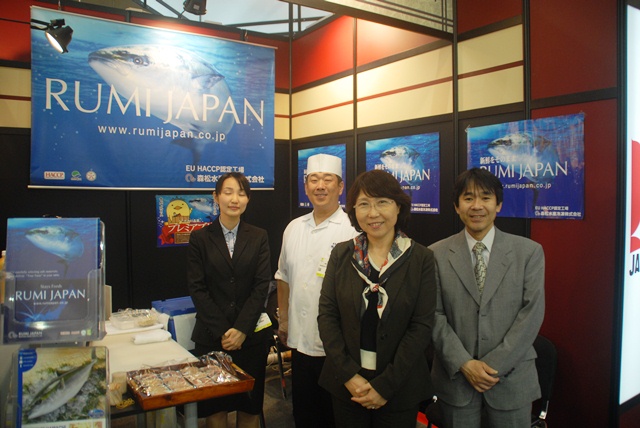 In Japan there are no more than 29 of such certified factories; China has 567 and is developing for a full-scale seafood export to the EU (2010 data: 1.56 billion euros; 40 times more than Japan). In Japan there are many small and middle-sized factories operating in ancient infrastructures and not more than 2 to 3% of the total export is destined for the EU (5 billion yen last year). Therefore many entrepreneurs are reluctant to make the investments for the purpose of obtaining HACCP certification (such as factory renovation, etc.). As a result several entrepreneurs in Japan have taken to Chinese factories for the processing and export to the EU. Furthermore, according to “Kanedai” at the JETRO booth, a fishery handling frozen seafood products such as scallops and crabs, the vast majority of their products are brought in from Namibia in Africa and processed in factories in China before being imported to Japan. Thanks to the Japanese food boom, Europeans have also begun to consume sushi and sashimi in great numbers, but it is suppliers from China, Korea, Thailand, Vietnam and others that are intervening in this market. Therefore I am hoping Japanese companies will be spurred on as well. In Japan there are no more than 29 of such certified factories; China has 567 and is developing for a full-scale seafood export to the EU (2010 data: 1.56 billion euros; 40 times more than Japan). In Japan there are many small and middle-sized factories operating in ancient infrastructures and not more than 2 to 3% of the total export is destined for the EU (5 billion yen last year). Therefore many entrepreneurs are reluctant to make the investments for the purpose of obtaining HACCP certification (such as factory renovation, etc.). As a result several entrepreneurs in Japan have taken to Chinese factories for the processing and export to the EU. Furthermore, according to “Kanedai” at the JETRO booth, a fishery handling frozen seafood products such as scallops and crabs, the vast majority of their products are brought in from Namibia in Africa and processed in factories in China before being imported to Japan. Thanks to the Japanese food boom, Europeans have also begun to consume sushi and sashimi in great numbers, but it is suppliers from China, Korea, Thailand, Vietnam and others that are intervening in this market. Therefore I am hoping Japanese companies will be spurred on as well.
< Young Jazz Band Players from Kanazawa >
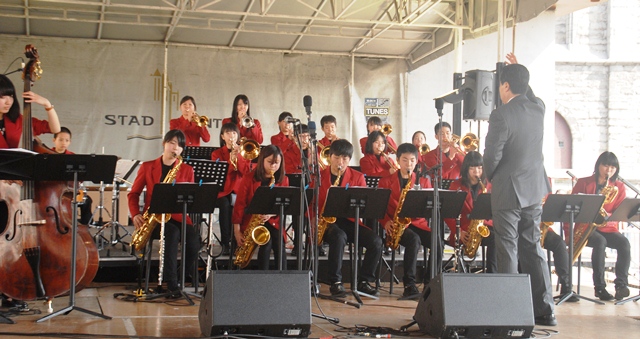 The city of Kanazawa in Japan and the city of Ghent in Belgium have a longstanding sister cities relationship, which I have previously mentioned. Through this tie, at the end of last month the junior jazz orchestra called “Jazz 21” from Kanazawa, consisting of twenty people, visited Ghent and gave a wonderful performance at the Ghent Jazz Festival. That day in question, when I visited, was appointed “International Jazz Day” by UNESCO. The Mayor of Ghent, Daniel Termont was also present at the outdoor event held that evening. The city of Kanazawa in Japan and the city of Ghent in Belgium have a longstanding sister cities relationship, which I have previously mentioned. Through this tie, at the end of last month the junior jazz orchestra called “Jazz 21” from Kanazawa, consisting of twenty people, visited Ghent and gave a wonderful performance at the Ghent Jazz Festival. That day in question, when I visited, was appointed “International Jazz Day” by UNESCO. The Mayor of Ghent, Daniel Termont was also present at the outdoor event held that evening.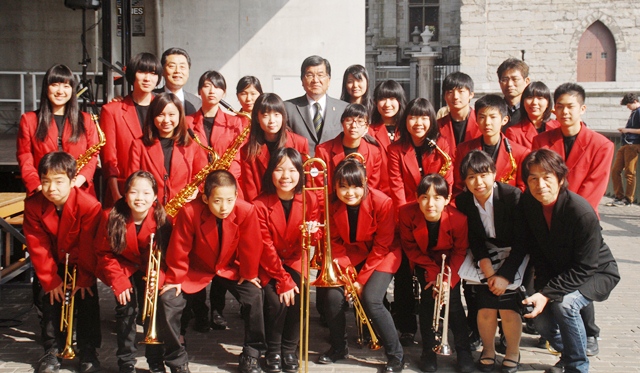 The members of “Jazz 21” varied from elementary school pupils to high-school students. I was taken aback by the outstanding performance of two elementary school pupils, one 6th grader boy who played the drums and a 6th grader girl who played the trumpet. The city of Kanazawa has set up a music studio at the Citizen’s Art Village, carried out by the Kanazawa Foundation for Artistic Creation to teach up-and-coming young musicians. It also has a performing arts and fine arts section where the people from Kanazawa can get widely acquainted with these arts. The sister cities of Kanazawa and Ghent are very close and have become a case-model for ties between international sister cities. I am waiting with anticipation for what will be next even more. The members of “Jazz 21” varied from elementary school pupils to high-school students. I was taken aback by the outstanding performance of two elementary school pupils, one 6th grader boy who played the drums and a 6th grader girl who played the trumpet. The city of Kanazawa has set up a music studio at the Citizen’s Art Village, carried out by the Kanazawa Foundation for Artistic Creation to teach up-and-coming young musicians. It also has a performing arts and fine arts section where the people from Kanazawa can get widely acquainted with these arts. The sister cities of Kanazawa and Ghent are very close and have become a case-model for ties between international sister cities. I am waiting with anticipation for what will be next even more.
< Bruno Lussato and the Yoshimi Futamura Exhibition >
 At the beginning of this month an exhibition was held in the private home of a Belgian where I got to appreciate an art collection by a Japanese ceramic artist living in Paris. This Belgian lady continues in the footsteps of her deceased elder brother and collector of high quality folk crafts, Bruno Lusssato and has renovated her own house into a museum to hold exhibitions for these collections. This time she hosted an exhibition of ceramics artist Yoshimi Futamura. At the beginning of this month an exhibition was held in the private home of a Belgian where I got to appreciate an art collection by a Japanese ceramic artist living in Paris. This Belgian lady continues in the footsteps of her deceased elder brother and collector of high quality folk crafts, Bruno Lusssato and has renovated her own house into a museum to hold exhibitions for these collections. This time she hosted an exhibition of ceramics artist Yoshimi Futamura.
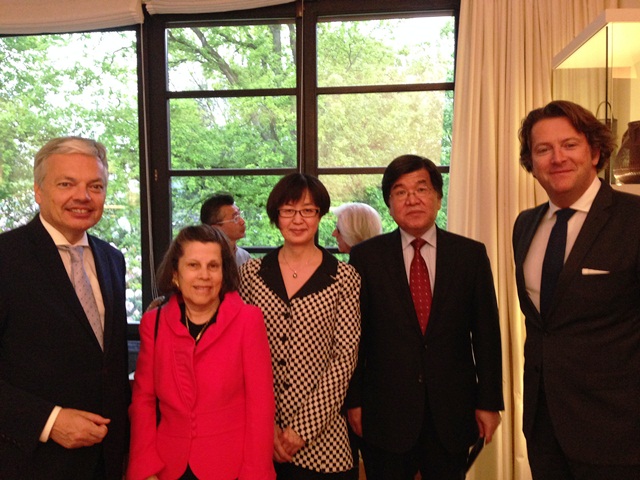 On that drizzly evening, the exhibition attracted about twenty art lovers. Later, Belgian Minister of Foreign Affairs Didier Reynders also joined. In my speech I commented on the fact that the earth, water and fire-motives in Futamura’s works were reminiscent of the traditional flame pattern-decorated earthenware of the Japanese ancient Jomon (straw-rope pattern) culture. The works are quite unique; the pottery is unglazed with a dark clay-colour and is decorated with detailed white porcelain fragments. They can be displayed as an art object or even be used as vases. Ms Lussato, who organised the exhibition, is deeply fond of Japanese folk crafts dating from the Muromachi period (1336-1573) up to the Edo period (1603-1868), and I as well was surprised by her great collection when I previously visited her residence. Having been living in Belgium for a while, it is not so surprising to meet enthusiastic fans of Japan, but the Lussato’s could be considered a classic example.
|

